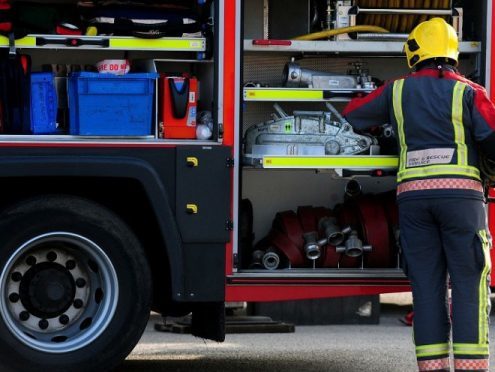Firefighters in the Highlands and islands were called to an astonishing 8,500 false alarms over the five years to 2016 – costing the service a staggering £17.5million, it has been revealed.
Almost half of all incidents attended by local Scottish Fire and Rescue Service (SFRS) crews are in response to unwanted fire alarm signals (UFAS).
John MacDonald, the deputy assistant chief officer in the north of Scotland, said reducing the number of false alarm call outs was a priority.
The senior firefighter, who will today present the new Local Fire and Rescue Plan for Highland to councillors, said: “Responding to UFAS incidents has a significant impact not only on SFRS resources but also on the wider community and the primary employers of our retained firefighters.
“They result in unnecessary blue light journeys, increased road risk, increased emissions from appliances, disruption to firefighter training programmes and disruption to the delivery of community safety activities.
“When fire appliances are responding to UFAS incidents, they are not available for other life-critical calls and every UFAS incident therefore diverts life-critical resources to non-critical events.”
He added: “There is also the disruption to the business in the building where the alarm has activated as a result of evacuation and the consequential impact on the internal work processes.”
An UFAS incident is defined as “an event which has required an operational attendance by the fire and rescue service due to the unwanted actuation of a fire alarm system”.
From 2011 to 2016, UFAS incidents accounted for 46% of all incidents attended by local crews, which equates to more than 8,500.
The Department for Communities and Local Government estimates the cost of every UFAS incident is around £1970, which puts pressure on already-stretched budgets.
Mr MacDonald insisted: “We will aim to reduce the number of UFAS incidents. We will achieve it by investigating the cause of every alarm activation at the UFAS incidents attended, and work with occupiers to develop demand reduction plans for poor performing premises.”
Cutting the number of call outs would, he said, cut the risk to firefighters and communities through reduced operational activity, and any savings made could then be reinvested in the service.
Highland Council’s strategic lead for police and fire, Councillor Matthew Reiss, said: “Obviously the figure sounds startling, but as a fire service we have to responde to every call out. The service is trying to reduce false calls, but fire safety is paramount and we have to accept that false alarms do happen. We must err on the side of caution and look at the big picture that any call out could end up as a full on emergency.”










